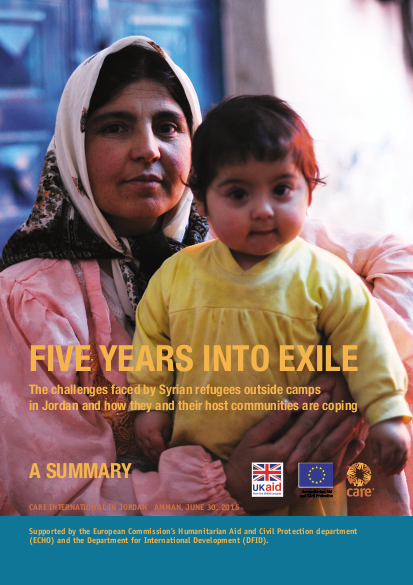Executive Summary

CARE’s 2015 needs assessment of urban Syria refugees in Jordan provides an updated picture of these challenges, the refugees’ priorities and coping mechanisms and a view of refugee community-host relations. It builds upon 2014, 2013 and 2012 assessments to create a picture over time, establishing some trends and helping to understand how conditions for Syrian refugees and their hosts are changing. In line with CARE’s Gender in Emergency approach, its analysis highlights that the experience of war and displacement is impacting men, women, boys, and girls differently.
This summary report outlines the main findings of CARE’s assessment report. The report is based on data collected from January 27 to March 1, 2015 in interviews with 1,300 families and focus group discussions and individual interviews with Syrian and Jordanian women, men, and male and female youth, and other stakeholders (CARE team members and representatives of local authorities and response actors)
Resource collections
- Accountability to affected populations (AAP)
- Evaluating humanitarian action
- Monitoring and Evaluation (M&E)
- Monitoring of humanitarian action
- UN Habitat - Urban Response Collection
- Urban Response - Urban Crisis Preparedness and Risk Reduction
- Urban Response Collection - Community Engagement and Social Cohesion
- Urban Response Collection - Economic Recovery
- Urban Response Collection - Environment and Climate Change
- Urban Response Collection - Housing, Land and Property
- Urban Response Collection - Urban Crisis Response, Recovery and Reconstruction
- Urban Response Collection - Urban Resilience
- Use of evaluation evidence